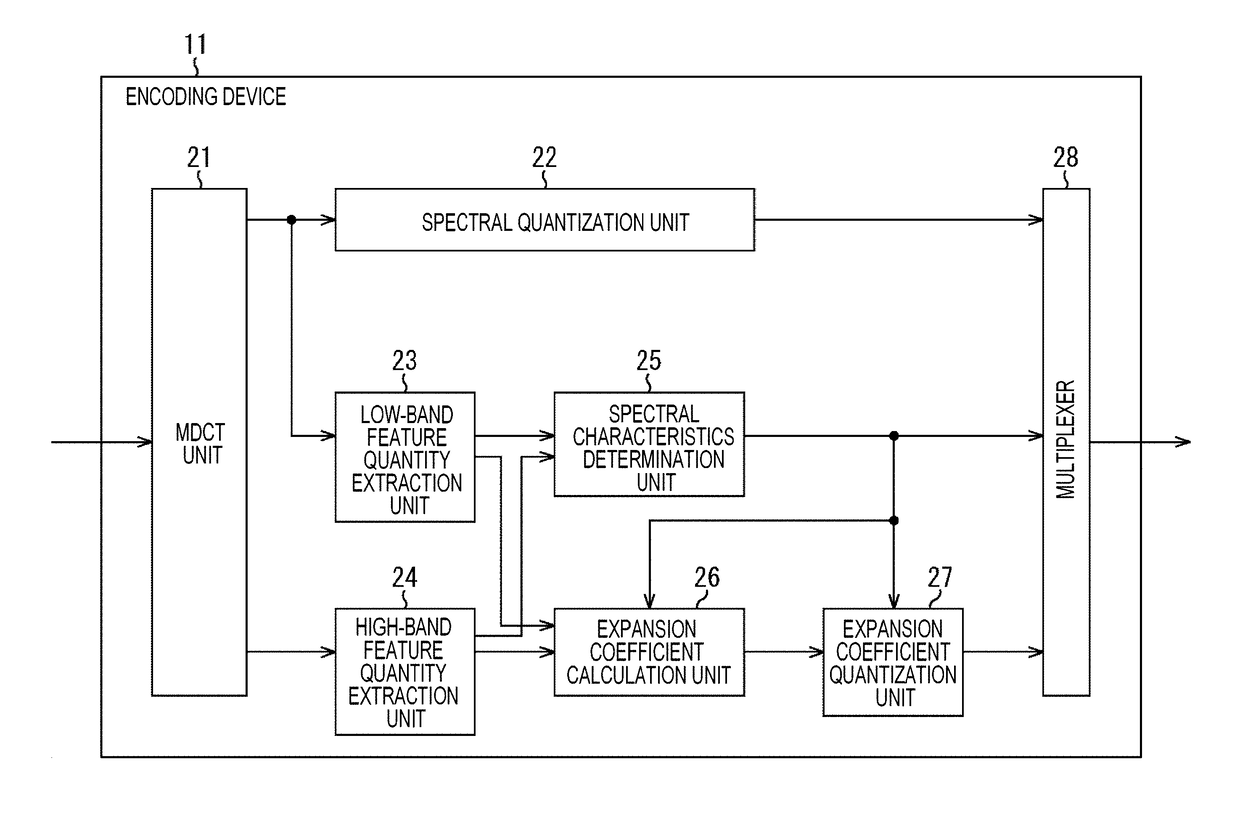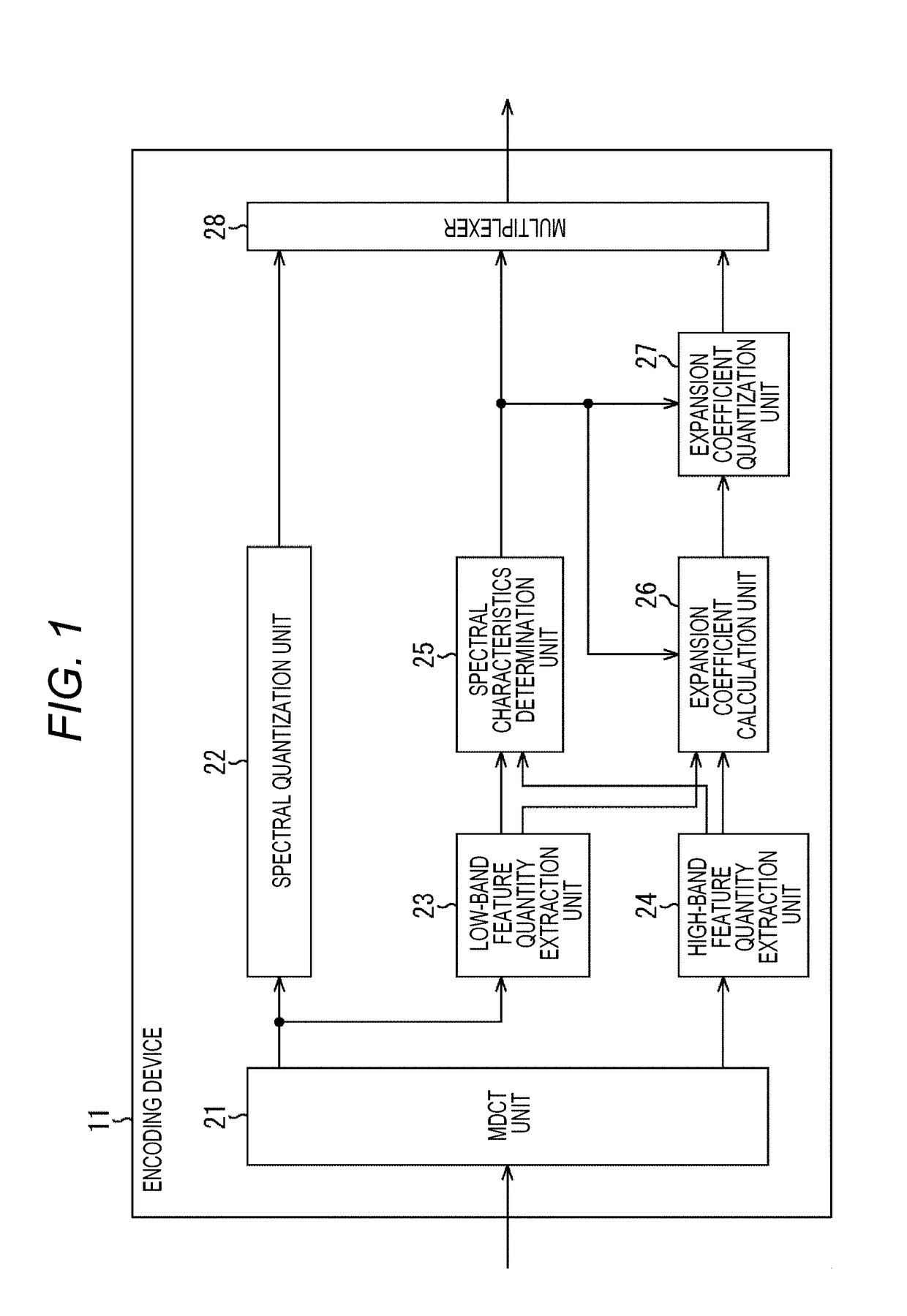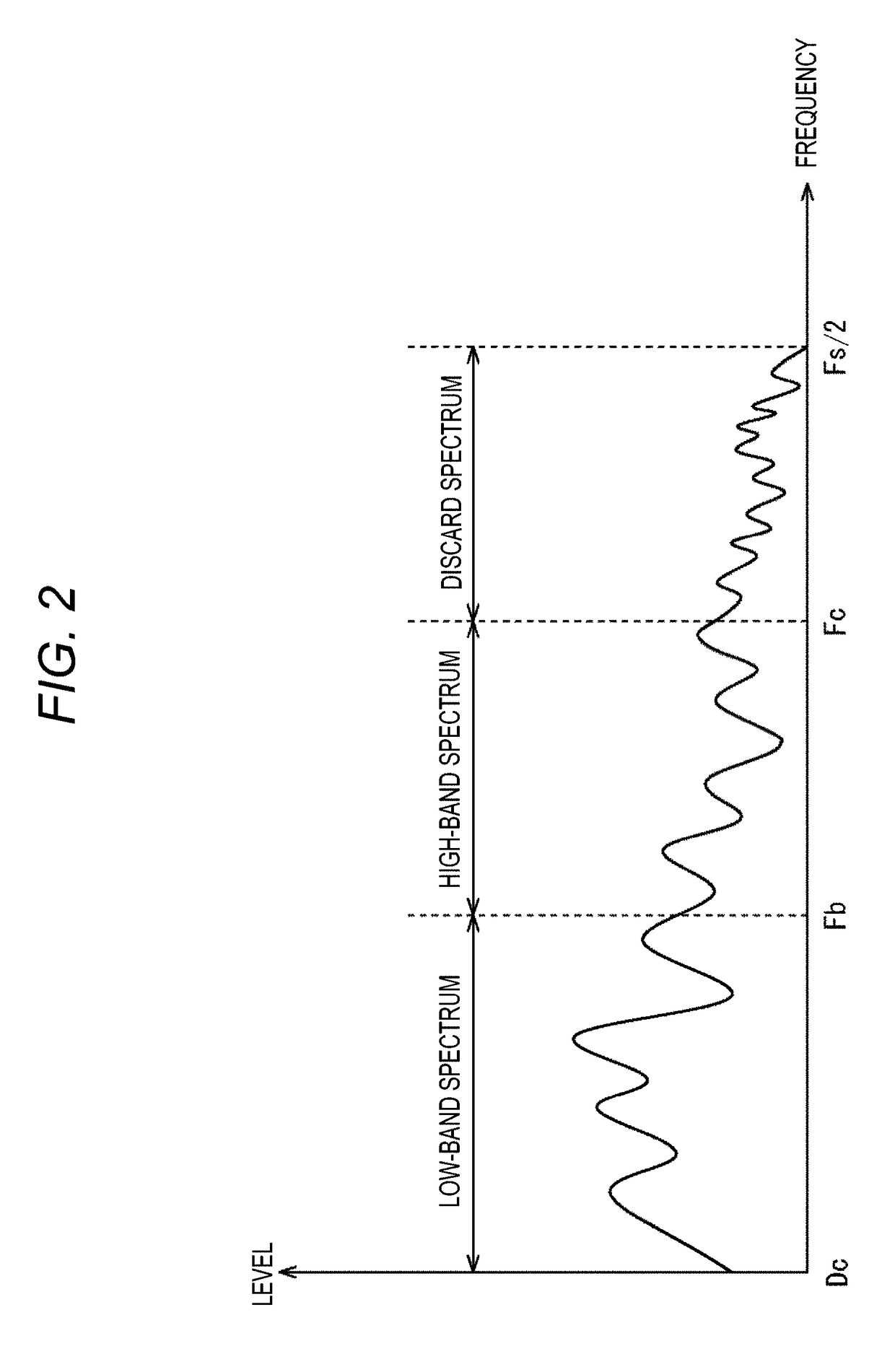Encoding device and method, decoding device and method, and program
a decoding device and a technology for encoding devices, applied in the field of encoding, can solve the problems of increasing the fundamental delay between the signal encoding and the decoding, increasing the amount of throughput and memory usage, and difficult to install a decoding device in a resource-poor setting such as an embedded device, and achieve the effect of high-quality sound
- Summary
- Abstract
- Description
- Claims
- Application Information
AI Technical Summary
Benefits of technology
Problems solved by technology
Method used
Image
Examples
first embodiment
[0058]
[0059]FIG. 1 is a diagram showing an example configuration of an embodiment of an encoding device to which the present technology is applied.
[0060]The encoding device 11 shown in FIG. 1 includes an MDCT unit 21, a spectral quantization unit 22, a low-band feature quantity extraction unit 23, a high-band feature quantity extraction unit 24, a spectral characteristics determination unit 25, an expansion coefficient calculation unit 26, an expansion coefficient quantization unit 27, and a multiplexer 28.
[0061]An input signal that is a time-series signal of a sampling frequency Fs [kHz] is supplied as the current audio signal to be encoded, to the MDCT unit 21.
[0062]The MDCT unit 21 performs MDCT as orthogonal transform, for example, on the supplied input signal, and obtains a spectrum from a frequency Dc [kHz] that is a DC component to a frequency Fs / 2 that is half the sampling frequency Fs.
[0063]It should be noted that, in the example case described below, MDCT is performed as o...
second embodiment
[0228]
[0229]In a case where the tonality of the low band of an input signal is high, the tonality of the high band of the input signal is normally likely to be also high. Therefore, in the encoding process described above, when both the low-band spectral feature quantity and the high-band spectral feature quantity are smaller than the threshold, the current input signal to be encoded has spectral characteristics exhibiting a high tonality.
[0230]However, as shown in FIG. 13, for example, there is an input signal having spectral characteristics that exhibit a high tonality in the low-band spectrum and a low tonality in the high-band spectrum, though such an input signal is not often generated. It should be noted that the ordinate axis in FIG. 13 indicates spectral value or level, and the abscissa axis indicates frequency.
[0231]In FIG. 13, a curve C61 represents the MDCT spectrum of the current input signal to be encoded. Specifically, in this MDCT spectrum, the portion from the freque...
PUM
 Login to View More
Login to View More Abstract
Description
Claims
Application Information
 Login to View More
Login to View More - R&D
- Intellectual Property
- Life Sciences
- Materials
- Tech Scout
- Unparalleled Data Quality
- Higher Quality Content
- 60% Fewer Hallucinations
Browse by: Latest US Patents, China's latest patents, Technical Efficacy Thesaurus, Application Domain, Technology Topic, Popular Technical Reports.
© 2025 PatSnap. All rights reserved.Legal|Privacy policy|Modern Slavery Act Transparency Statement|Sitemap|About US| Contact US: help@patsnap.com



